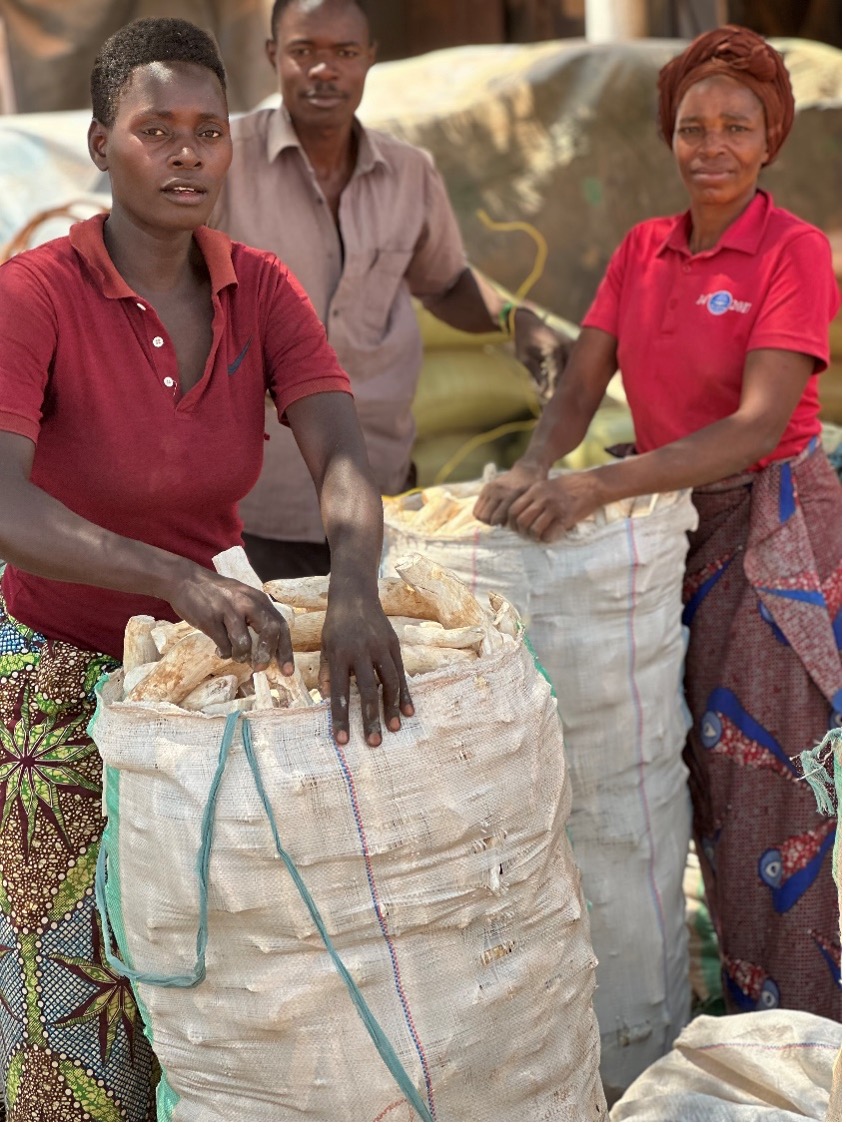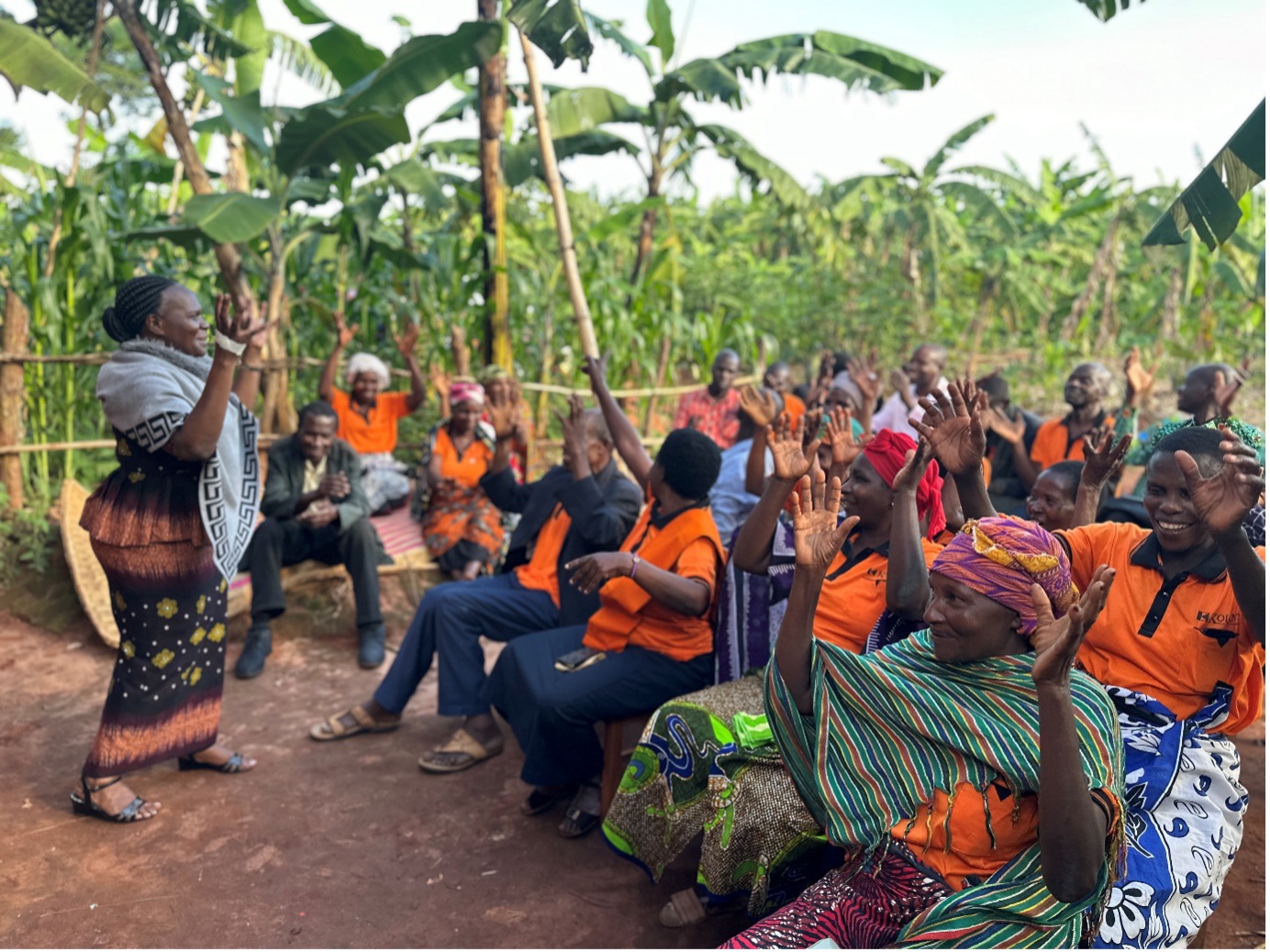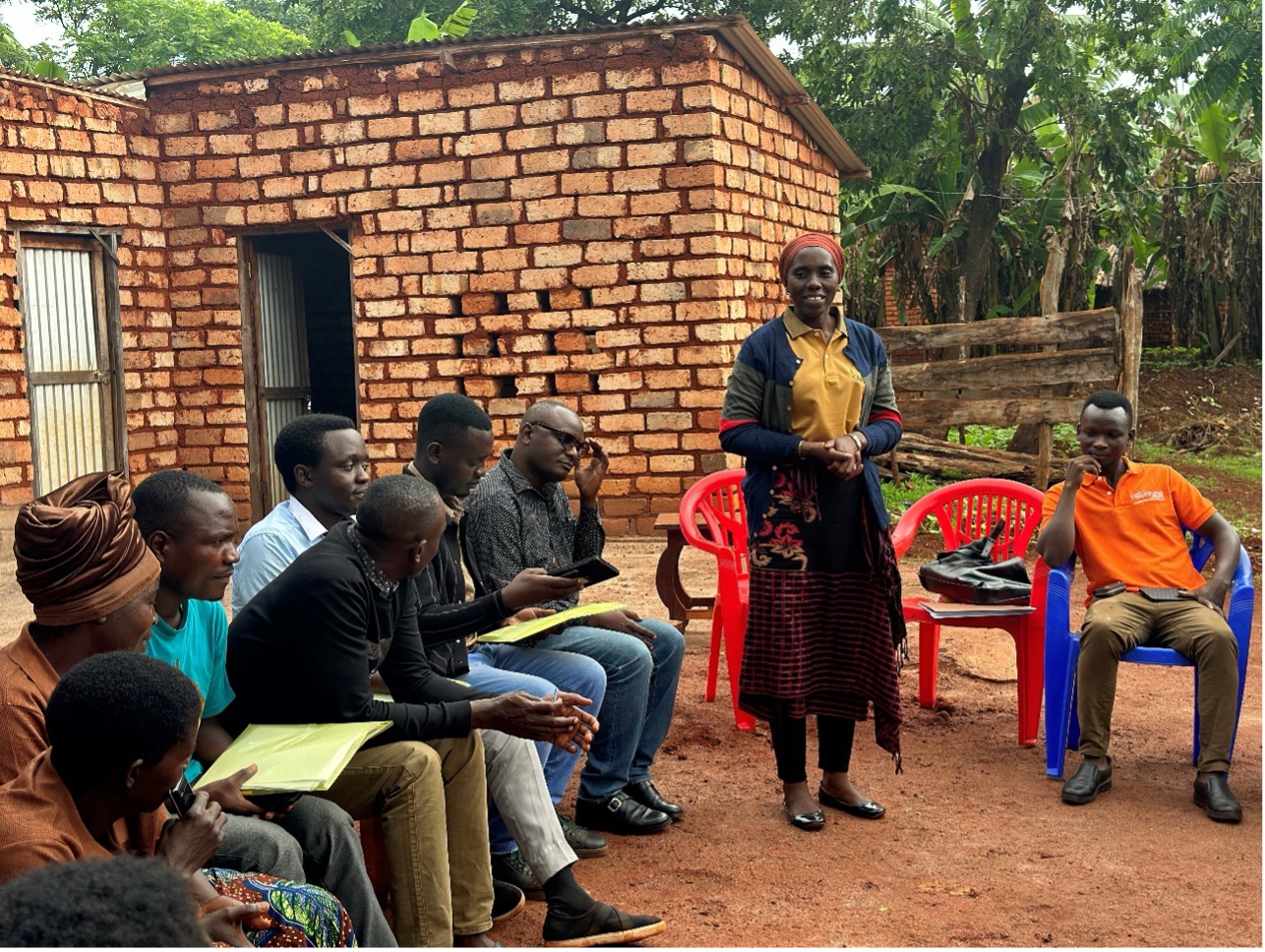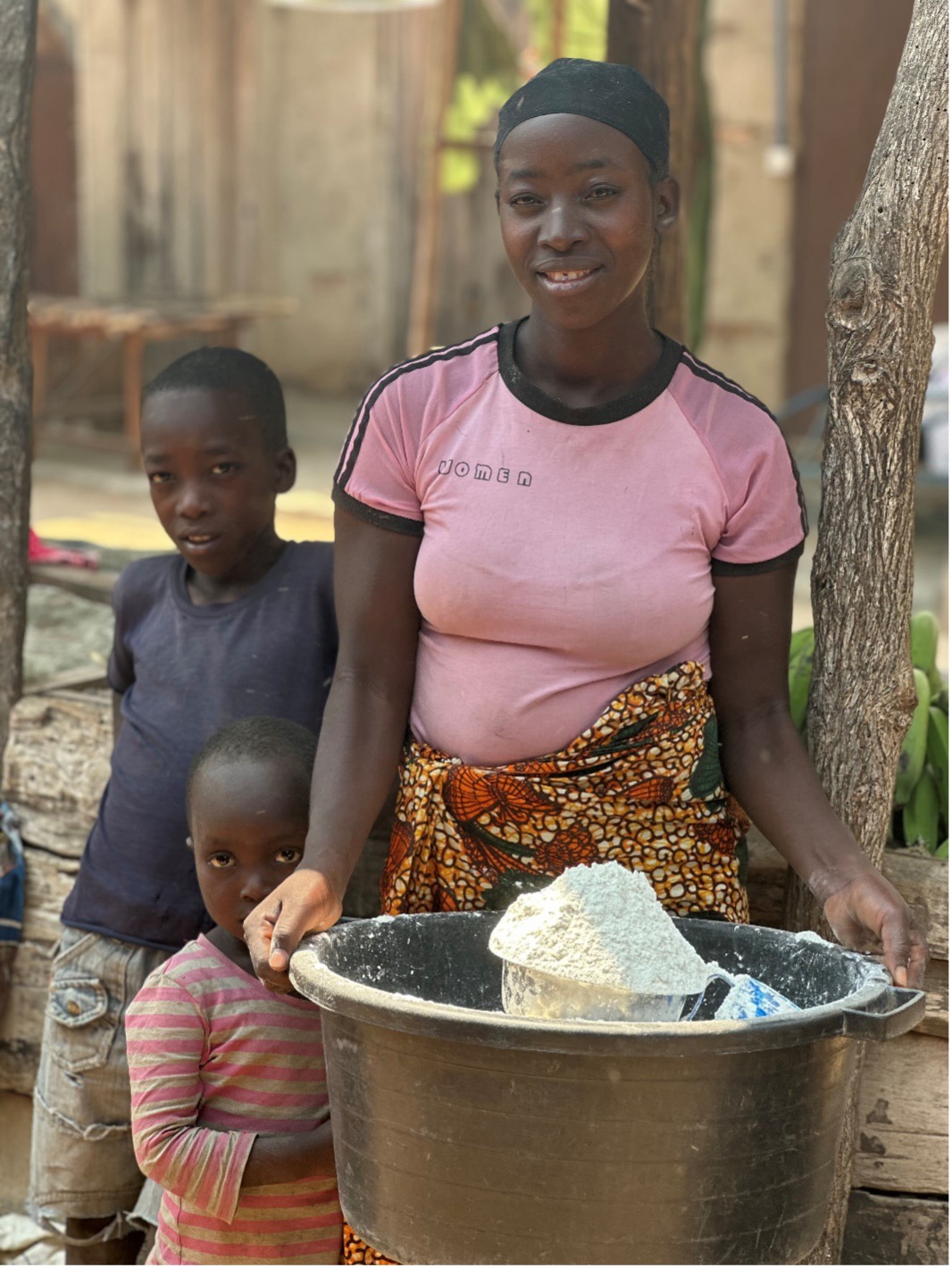Gender transformative approaches (GTAs) have emerged as critical strategies for addressing deep-rooted gender inequalities in agrifood systems.
The co-designing process, undertaken by Nyakitonto Youth for Development (NYDT) and Kolping Society of Tanzania (KST) in collaboration with the CGIAR Gender Equality Initiative under IITA, has demonstrated how participatory methodologies can lead to meaningful changes in organizational practices, individual perspectives, and community engagement. This blog highlights the transformative journey of these organizations through their experiences and insights.

Organizational Perspective Shifts
Both NYDT and KST experienced significant changes in their understanding and approach to gender equity within agriculture:
- KST’s Perspective: Before engaging in the co-design process, KST had not prioritized gender issues in its work on the cassava value chain. However, the process revealed critical gaps. As one KST representative shared, “When we asked women how they benefit from their work, they opened up and said that they only farm but do not benefit much because the land belongs to their partners. Their husbands are the ones who make decisions on their resources.” This realization led KST to integrate gender considerations into all its activities, with a representative emphasizing, “Gender is now a critical issue that intersects with all the activities we undertake in our organization.”

Geraldina Mushema, an Agronomist during a session with Ijumbi Group member(One of KST Self Help Groups). Photo Credit: Sarah Msita
- NYDT’s Perspective: Similarly, NYDT recognized the importance of gender mainstreaming across its projects. According to NYDT, “The organization has come clear with the importance of including gender issues in all activities. The change in perspective has made NYDT to begin working on reforming its human resource policy to include gender considerations in all its activities.” This shift has also led NYDT to conduct regular gender analyses and develop annual Gender Action Plans.

Kilio Mnyoroka
- Impactful Moments in Co-DesigningThe co-design process provided several pivotal moments for both organizations:
- KST’s Experience: During stakeholder workshops, women shared personal stories that highlighted systemic inequalities. One woman stated, “I cannot even ask my husband how much he has earned from the cassava, even though I am the one who cultivated it!” Such moments underscored the need for interventions targeting restrictive norms around decision-making and resource control. Additionally, KST collaborated with experts from IITA to develop user-friendly gender-transformative tools. “Together, we created tools that have the potential to significantly change community perceptions regarding identified gender issues,” a KST representative noted.
- NYDT’s Experience: For NYDT, preparing and implementing a baseline survey was a transformative experience. Through this activity, the organization and its staff had the opportunity to better prepare a questionnaire that was gender-sensitive. This process also strengthened relationships with government stakeholders and communities. As NYDT’s CEO Ramadhani Joel reflected, “Co-designing helped us improve ways of working, and we adopted it for scaling up in other projects.”
Adoption of New Practices
Both organizations adopted innovative practices as a r of their involvement in the co-design process:
- KST:
- Integrated gender-transformative interventions into existing programs
- Enhanced stakeholder engagement methodologies
- Developed monitoring and evaluation frameworks, specifically measuring gender-related outcomes
- Strengthened inter-sectoral collaborations
A KST representative emphasized the value of these changes: “By allowing full participation among stakeholders, co-design enhances both the participants’ experience and the overall success of the project.”
- NYDT:
- Increased staff participation in planning and designing interventions
- Conducted periodic gender analyses to assess gaps
- Adopted co-design as a standard practice for project implementation
According to Kilio Mnyoroka, Project Technical Lead at NYDT, “My participation in this intervention particularly in co-designing and developing working tools taught me a lot about career development and skills improvement.”
Individual and Institutional Culture Change
The co-design process enhanced personal growth among staff members while fostering cultural shifts within both organizations:
- KST Staff Growth: One KST member shared a personal story about discussing inheritance-wills with her husband after learning about gender equality concepts. She explained, “Initially, he was resistant… but when I presented him with cases illustrating challenges that girls face after the death of their parents, using real examples, he came to understand.”
- NYDT Staff Growth: Field officer Samwel Japhet reflected on how his perspective shifted: “This short-term participation in GTI has helped me to have a positive attitude towards domestic chores, regardless of whether my mom is sick or healthy. I hope this knowledge gained will bring about change in my community.”
KST and NYDT embraced practices such as preparing periodic Gender Action Plans and conducting regular gender analyses. As NYDT’s CEO noted, “This activity seemed complicated at first but proved to be the best way of impacting clear understanding of projects among implementing staff.”
Advantages of Co-Designing
The co-design approach demonstrated several advantages over traditional top-down methodologies:
- Local Ownership and Relevance: Interventions were grounded in community realities
- Trust Building and Empowerment: Women were empowered as agents of change
- Sustainable Behavioral Change: Solutions rooted in local knowledge showed potential for long-term impact
- Innovation and Flexibility: Context-specific solutions emerged through participatory processes
As one KST representative remarked, “Co-design brought about innovative and context-specific solutions that a top-down approach may overlook.”
Future Directions
Both NYDT and KST remain committed to addressing gender normative constraints:
- KST is excited to employ the co-designed Gender transformative tools in driving deep refelections that would change the inequality within the agrifood systems, particularly among actors within the cassava value chain.
- NYDT aims to strengthen partnerships with IITA for ongoing learning about gender issues, while advocating for donor support for gender mainstreaming initiatives.
As NYDT stated, “Co-designing is one among the best approaches for designing and implementing projects… It gives enough room for implementers to learn and share community realities.”

A Cassava entrepreneur and her children selling cassava flour on market day: Photo Credit: Sarah Msita
Conclusion
The co-design process has been transformative for both NYDT and KST. By addressing deep-rooted gender norms through collaborative efforts, these organizations have fostered innovative solutions that are believed to empower communities while promoting equity in agrifood systems. As KST concluded, “Gender is now a critical issue that intersects with all activities we undertake… We have developed a strong understanding of how to address it effectively.” Similarly, NYDT emphasized that “the co-design approach has strengthened our capacity as an organization while improving ways of working across all projects.” Together, these efforts demonstrate how participatory approaches can drive meaningful change toward achieving gender equity in agriculture.



No Comments